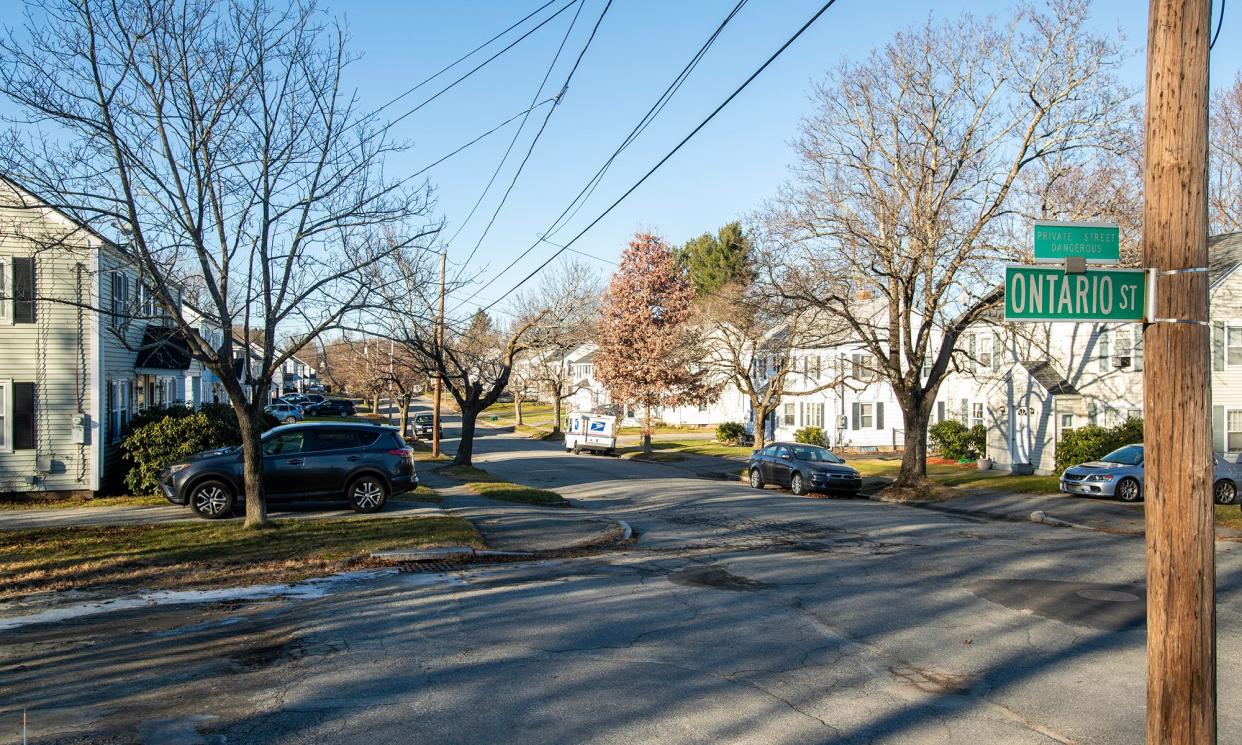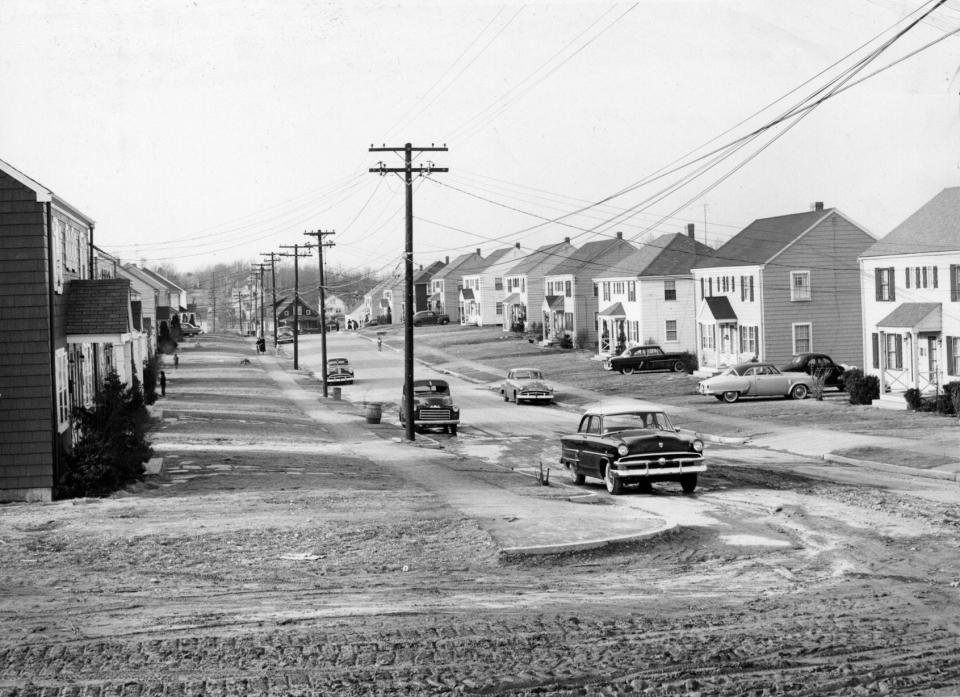Then & Now: Uncatena Avenue, Worcester


With World War II soldiers returning home to Worcester, the St. Nicholas Veterans Housing Project proved to be a notable solution to the emerging housing crisis.
The building of dozens of duplexes came together quickly, fueled by the partnership of Worcester's five mutual savings banks, the Worcester Chamber of Commerce and the Master Home Builders Association.
While the story of the housing project might be unknown to many, the homes it yielded are a sturdy reminder.
A drive along Uncatena Avenue — shown in this week's Then photo — and adjacent streets in the Burncoat section of Worcester will reveal dozens of the postwar duplexes, now privately owned. The buildings blend in with the city's varied housing styles. Duplexes are common in any city. But it's the backstory that stands out.
The St. Nicholas Veterans Housing Project was the first of its kind in the state, sparked by an initiative by the National Association of Home Builders. At a convention in Chicago in 1947, the business group outlined a goal of developing millions of housing units in the coming years.
In Worcester, a trust was established to organize funding and oversee the development of housing. One of the first orders of business for the St. Nicholas Trust was to find a spot suitable for development. Eventually, a 13-acre parcel off Clark Street, owned by Ernest P. Whitehead, was targeted.
The plan called for the nonprofit trust to own the houses, renting to veterans with children, and then sell the properties, with tenants given priority after five years. By then, the housing shortage would be less pressing.
The key players in the effort were the Worcester banks that joined the trust: Bay State Savings Bank, Peoples Savings Bank, Worcester Mechanics Savings Bank, Worcester Five Cents Savings Bank and Worcester County Institution for Savings.
The trust built 72 duplexes in 1947 and 1948. Monthly rent in the early years was $55.
"While other cities have been talking homes, Worcester and builders and bankers have been building them," said Carl Brownell, chairman of the trust.
The duplexes were nearly wiped from the landscape June 9, 1953, when a tornado barreled its way through Central Massachusetts including Burncoat and Greendale. The destructive weather caused extensive damage to the veterans housing, leaving a $600,000 repair bill.
Using insurance money, the trust oversaw the repair of the damaged property.
Meantime, the tornado delayed the trust's planned sale of the duplexes. The original agreement called for the trust to sell the properties to private owners after at least five years — about the time of the tornado. That phase eventually got underway in February 1954, with the first buyer being Edward V. Mara, a duplex tenant. He and his wife were the original occupants of the duplex in 1948.
Two years later, the last of the 72 duplexes was sold by the trust. By then, the original stipulation, that buyers be veterans, had been lifted, with sales to the general public allowed. The typical sale price of the buildings was $13,000 (about $147,000 in today's dollars), about $2,000 less than the original construction cost.
By 1957, the trust was dissolved, its mission complete. A victory party was held at Putnam & Thurston's restaurant in downtown Worcester.
Last week Then & Now: Greenville Fire Station and Copeland Library, Leicester
This article originally appeared on Telegram & Gazette: Then & Now: Uncatena Avenue, Worcester

